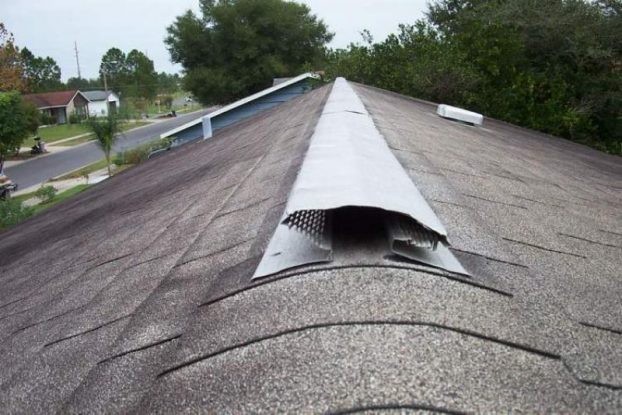When Do You Need A Ridge Vent?

To ensure that you have a stable roof deck and that your shingles are not prone to damage, it is critical for your roof to be properly ventilated. While there are several options for ventilating a modern roof, most roofing professionals vouch for ridge vents as one of the most viable options, thanks to their unmatched coverage and reliability.
For starters, ridge vents are essentially vents that are installed at the peak of the roof—where the two sloped sides of your roof meet. The vents are designed to enhance the expulsion of hot air from the attic, promoting better energy efficiency and ultimately boosting the longevity and integrity of your roof.
So, when do you need a ridge vent? Well, let’s find out:
- When you want to improve the efficiency of your home’s ventilation system
For your roof to properly protect your home, it needs proper ventilation to protect it from fungus and mold that often move under your eaves and attic crawl space. Warm, moist air can also cause wood rot as fungus tends to thrive in damp, dark environments. Ridge vents will work in tandem with your eaves and soffits to ensure proper airflow. This implies that as the warm, moist air flows in (this happens always under your roof), it is drawn out through your ridge vent (warm air naturally rises).
Moisture build-up is, therefore, almost completely inhabited, eliminating potential condensation problems. Without a ridge vent, there won’t be an escape route for outside air flowing into your attic. This can cause problems like cracking and premature aging to the attic and your roof.
- If you want to protect your roof from moisture damage
Installing a roof ridge can also protect the underside of your roof from heat and moisture damage by providing your rooftop with space for trapped warm air to escape. Several factors may contribute to moisture accumulation in your roof. Things, like running hot water in your bathroom or using your dishwasher, may cause vapor to collect in your roofing area. Since ridge vents come with multiple exit points, moisture will never collect long enough to cause any significant damage.
- If you like the aesthetics and many other benefits that come with ridge vents
According to Next Wave Roofing, many homeowners may also choose ridge vents simply because they like their aesthetic appeal. Ridge vents are designed to be as flat as possible and to blend with most roofs. Considering that they align with the ridge of your roof, they tend to be almost invisible from the ground. Ridge vents can also be used without any kind of external power sources like electricity or wind; the vents are designed to use natural convection of air, which implies that they will serve you year-round without draining your finances in form of higher energy bills.
Another unique attribute of ridge vents is the fact that they can work even when they are covered with snow. Since hot hair constantly works its way up to the peak of your roof, the snow will always melt away. Finally, unlike other ventilator systems that often leave hot and cold zones on your roof surface, ridge vents ensure even temperature distribution throughout your roof.
Final Thoughts
There are many benefits of using ridge vents in your home’s ventilation system. However, before you use the events in your home, you should remember that proper installation is critical. Accordingly, it is important to find a professional roofer with extensive experience in ridge vent installation to help you.
It is also worth mentioning that installing ridge vents come with a few concerns. If you are going to install them in older homes, for instance, you need to be careful lest you end up with unattractive vents. If they are not properly aligned with your old roof, you may end up with hail and snow in your attic during winter storms, which can lead to water damage and other issues. So, before installing ridge vents in an older home, consider the ventilation system that you already have. If you have gable vents that are properly installed and they are working optimally, installing a ridge vent may not offer you a significant advantage.
More to Read:
Previous Posts:


